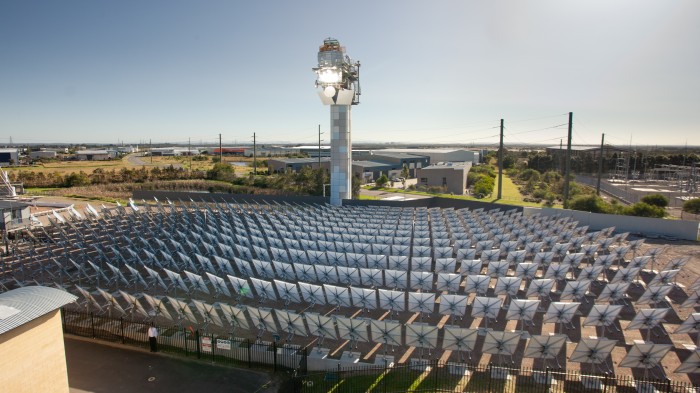The Strange Case of Australia’s Flip-Flopping on Climate Change
In another zig-zag on Australia's climate and energy policy, Australian Prime Minister Malcolm Turnbull said he will establish a $760 million clean-energy innovation fund to invest in emerging technologies. Known as the Clean Energy Innovation Fund, the new program is a 180-degree pivot from the policies of Turnbull’s predecessor, Tony Abbott, who strongly supported Australia’s coal industry and derided efforts to set up a carbon-trading system.
Among developed economies, Australia is one of the most vulnerable to climate change, with the Great Barrier Reef suffering serious degradation, and wildfires that decimate the countryside. A pair of reports released earlier this month found that the cost of natural disasters in Australia is 50 percent higher than previous estimates and could rise to $25 billion a year by 2050, even without the likely effects of global warming.

Australia gets more than two-thirds of its electricity from coal power, and exports more than 330 million tons of coal a year, most of it to China. The Abbott government backed the coal industry to the hilt even as major coal-mining projects, such as the huge Carmichael mine, were delayed or canceled. An ambitious carbon tax and emissions trading scheme was canceled by Abbott in 2014.
Now the new clean energy technology fund will seek to bring Australia’s energy policies in line with the U.S., China, and Europe and help cut the country’s greenhouse gas emissions by 26 to 28 percent of 2005 levels by 2030—the target set under the Paris climate accord in December.
(Read more: Sydney Morning Herald, The Guardian, “Is the Carbon Tax Dead?”)
Keep Reading
Most Popular
Large language models can do jaw-dropping things. But nobody knows exactly why.
And that's a problem. Figuring it out is one of the biggest scientific puzzles of our time and a crucial step towards controlling more powerful future models.
The problem with plug-in hybrids? Their drivers.
Plug-in hybrids are often sold as a transition to EVs, but new data from Europe shows we’re still underestimating the emissions they produce.
Google DeepMind’s new generative model makes Super Mario–like games from scratch
Genie learns how to control games by watching hours and hours of video. It could help train next-gen robots too.
How scientists traced a mysterious covid case back to six toilets
When wastewater surveillance turns into a hunt for a single infected individual, the ethics get tricky.
Stay connected
Get the latest updates from
MIT Technology Review
Discover special offers, top stories, upcoming events, and more.